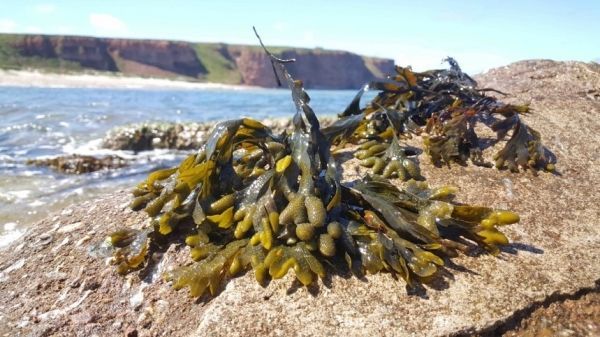You may like them or not, but almost everyone knows them: brown algae such as Fucus vesiculosus, commonly known as bladderwrack, grow along the entire German coast. Giant kelp like Macrocystis or Sargassum grow closely together along the coasts but can also form floating aggregates that can cover the Atlantic from west to east. Some ecologists see this this very productive ecosystem as a marine counterpart to rainforests on land. In these algal forests, large amounts of carbon dioxide are stored, making them an important part of the global carbon cycle.
Andreas Sichert from the Max Planck Institute for Marine Microbiology dedicated his PhD to the question how brown algae can be such a good sink of carbon: "Main constituents of algal biomass are their cell walls - a tight network of proteins and long-chained sugars. When the algae die, we actually have little clue about the fate of algal biomass in the ocean, for example which compounds are degraded fast or slowly".
Firm and flexible
The Atlantic coast is not a cozy habitat. Tides, wind and waves demand special adaptations from the inhabitants of this harsh environment. Brown algae developed a special cell wall structure, making them both firm and flexible, and enabling the plant to successfully withstand heavy currents and waves. A major component of the cell walls is the polysaccharide fucoidan, a long-chained sugar accounting for about a quarter of algal dry mass. Likely, fucoidan can regulate the water content of the cell wall which protects brown algae from drying out at low tide.
Read more at Max Planck Institute for Marine Microbiology
Image: The brown algae Fucus vesiculosus grows on stones almost everywhere along the North Sea and Baltic Sea. For the study the researchers also examined fucoidan of these algae like those at the coast of Heligoland. CREDIT: Max Planck Institute for Marine Microbiology, M. Schultz-Johansen


